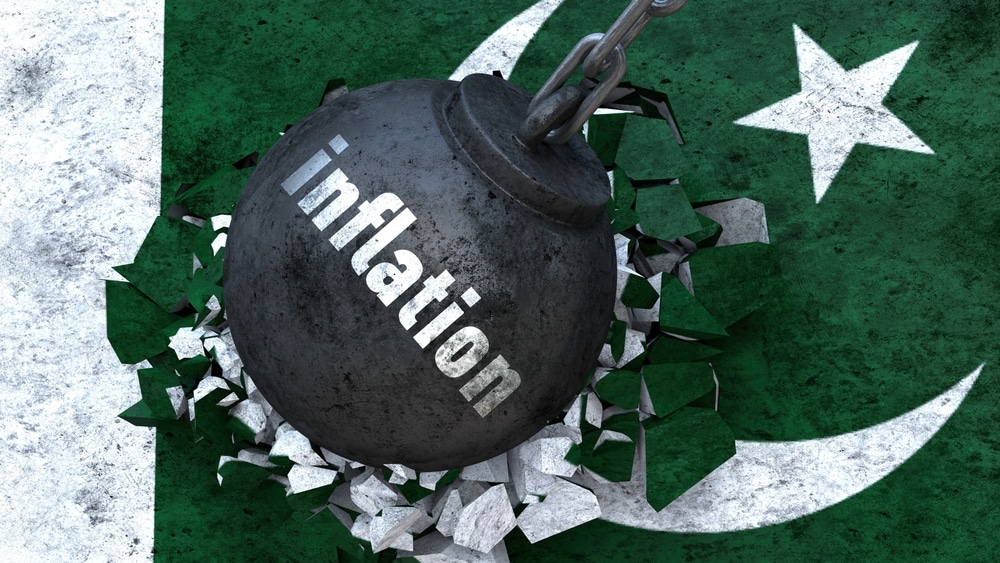Understanding The Link Between Severe Mental Illness And Violence: An Academic Perspective

Table of Contents
The chilling statistic that individuals with severe mental illness (SMI) are disproportionately involved in violent incidents often dominates public discourse. However, this complex relationship demands a nuanced understanding, moving beyond sensationalized headlines and focusing on evidence-based knowledge. This article aims to explore the academic perspective on the link between severe mental illness and violence, dispelling myths and highlighting the crucial role of effective interventions. We will examine the prevalence of violence in individuals with SMI, delve into the role of specific mental illnesses, and discuss strategies to address the stigma and promote effective interventions.
H2: The Prevalence of Violence in Individuals with SMI:
H3: Statistical Data and Research Findings: Epidemiological studies reveal a complex picture. While individuals with SMI demonstrate a slightly elevated risk of violence compared to the general population, this risk remains relatively low. A meta-analysis by Elbogen and Johnson (2009) found a modest increase in the risk of violence among individuals with schizophrenia and bipolar disorder. However, it’s crucial to understand the limitations of such research.
- Studies often rely on retrospective data, leading to potential recall bias.
- Definitions of “violence” can vary significantly across studies.
- Confounding factors such as substance abuse are frequently not adequately controlled for.
Despite these limitations, the research consistently points to a small, yet statistically significant, increased risk of violence associated with certain SMI diagnoses, particularly when untreated.
H3: Types of Violence and Risk Factors: The type of violence associated with SMI is also critical to consider. This encompasses:
- Self-harm: Suicide attempts and self-inflicted injuries are tragically prevalent among individuals with SMI.
- Interpersonal violence: This includes physical assault, threats, and intimidation directed at others.
- Violence against property: Damage to property, vandalism, and arson can also occur.
Several risk factors significantly increase the likelihood of violent behavior:
- Untreated psychosis, particularly command hallucinations or persecutory delusions.
- Substance abuse, which exacerbates symptoms and impairs judgment.
- History of trauma, which can contribute to anger, aggression, and impulsivity.
- Lack of social support, leading to isolation and increased stress.
H2: The Role of Specific Mental Illnesses:
H3: Schizophrenia and Violence: Schizophrenia is often incorrectly portrayed as a primary driver of violence. While some individuals with schizophrenia may exhibit violent behavior, it's essential to distinguish between symptoms and behaviors. Paranoia and command hallucinations, for instance, can increase the risk of aggressive actions. However, effective treatment significantly reduces this risk.
- Antipsychotic medication helps manage psychotic symptoms.
- Cognitive behavioral therapy (CBT) can help individuals challenge delusional beliefs.
- Social skills training improves interpersonal interactions.
H3: Bipolar Disorder and Violence: During manic episodes, individuals with bipolar disorder may experience impulsivity, impaired judgment, and grandiose delusions, increasing the potential for violence. Medication adherence is crucial in preventing these episodes and reducing the risk.
- Mood stabilizers are effective in managing mood swings.
- Psychotherapy helps individuals develop coping mechanisms for managing symptoms.
- Regular monitoring and support from mental health professionals are essential.
H3: Other Severe Mental Illnesses: Other SMI, such as major depressive disorder with psychotic features and borderline personality disorder, also show some association with violence, though the research is less extensive. Tailored approaches, addressing the unique symptoms and challenges of each condition, are crucial.
H2: Addressing the Stigma and Promoting Effective Interventions:
H3: The Impact of Stigma: Negative attitudes and stigmatizing beliefs surrounding SMI severely hinder access to treatment and support. This stigma leads to:
- Delayed help-seeking: Individuals may avoid seeking professional help due to fear of judgment.
- Discrimination: Individuals with SMI often face discrimination in employment, housing, and social interactions.
- Reduced social support: Fear and misunderstanding can isolate individuals from their communities.
H3: Effective Treatment and Support Systems: Evidence-based treatments are crucial in managing symptoms and reducing the risk of violence. These include:
- Medication: Antipsychotics, mood stabilizers, and antidepressants are effective in managing specific symptoms.
- Psychotherapy: CBT and other therapies help individuals develop coping skills and manage their emotions.
- Psychosocial interventions: Assertive Community Treatment (ACT) and supported employment programs provide comprehensive support.
H3: Early Intervention and Prevention Strategies: Early identification and intervention are key to preventing the escalation of symptoms and violence. This involves:
- Recognizing early warning signs: Changes in behavior, mood, and sleep patterns.
- Access to timely mental health services: Reducing barriers to care is crucial.
- Community-based support: Providing ongoing support and monitoring to prevent relapse.
Conclusion:
The relationship between severe mental illness and violence is complex, multifaceted, and not as straightforward as often portrayed. While individuals with SMI have a slightly elevated risk of violence, the vast majority are not violent. The focus must shift towards addressing the underlying causes, including untreated mental illness, substance abuse, and social factors. By challenging stigma, promoting effective treatment, and implementing comprehensive support systems, we can significantly reduce the risk of violence associated with severe mental illness and build safer, more inclusive communities. Let's work together to improve understanding of severe mental illness and violence, advocating for better access to mental health services and promoting evidence-based interventions. Learn more about understanding severe mental illness and preventing violence related to mental illness by contacting your local mental health organization.

Featured Posts
-
 Le Futur Du Reseau De Tram De Dijon Concertation Sur La 3e Ligne
May 10, 2025
Le Futur Du Reseau De Tram De Dijon Concertation Sur La 3e Ligne
May 10, 2025 -
 Tonights Nhl Game Oilers Vs Sharks Expert Prediction And Betting Odds
May 10, 2025
Tonights Nhl Game Oilers Vs Sharks Expert Prediction And Betting Odds
May 10, 2025 -
 Asylum Seekers From Three Countries Face Increased Uk Scrutiny
May 10, 2025
Asylum Seekers From Three Countries Face Increased Uk Scrutiny
May 10, 2025 -
 Floridai Transznemu No Letartoztatasa Jogi Vita A Noi Mosdok Hasznalatarol
May 10, 2025
Floridai Transznemu No Letartoztatasa Jogi Vita A Noi Mosdok Hasznalatarol
May 10, 2025 -
 Vegas Claims Playoff Berth After Narrow Loss To Oilers 3 2
May 10, 2025
Vegas Claims Playoff Berth After Narrow Loss To Oilers 3 2
May 10, 2025
Latest Posts
-
 Noviy Vitok Migratsii Germaniya Ozabochena Pritokom Ukrainskikh Bezhentsev Iz Za Politiki S Sh A
May 10, 2025
Noviy Vitok Migratsii Germaniya Ozabochena Pritokom Ukrainskikh Bezhentsev Iz Za Politiki S Sh A
May 10, 2025 -
 Pakistan Economic Crisis Imf Reviews 1 3 Billion Aid Package
May 10, 2025
Pakistan Economic Crisis Imf Reviews 1 3 Billion Aid Package
May 10, 2025 -
 Bezhentsy Iz Ukrainy Germaniya Otsenivaet Riski Novogo Naplyva Posle Deystviy S Sh A
May 10, 2025
Bezhentsy Iz Ukrainy Germaniya Otsenivaet Riski Novogo Naplyva Posle Deystviy S Sh A
May 10, 2025 -
 S Sh A I Migratsionniy Krizis Ozhidaniya Novogo Pritoka Ukraintsev V Germaniyu
May 10, 2025
S Sh A I Migratsionniy Krizis Ozhidaniya Novogo Pritoka Ukraintsev V Germaniyu
May 10, 2025 -
 First Up Imf To Review 1 3 Billion Pakistan Loan Package
May 10, 2025
First Up Imf To Review 1 3 Billion Pakistan Loan Package
May 10, 2025
